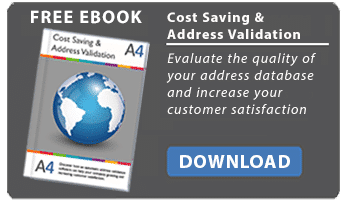
With this in mind, in order to ensure profitable data entry it is also necessary to take other aspects into consideration, such as the speed of the process (faster when corrections are not necessary), or auto-completion of certain operations, seeing the geolocation of data on a map or the association of a home address with an area code, a province, etc. In this article, we take a look, step by step, at 5 helpful tips to limit data entry costs and achieve superior results in terms of data quality, even for large volumes of information and without the need of external support from a technician.
1) CLEANSE YOUR DATABASE BEFORE ENTERING NEW DATA
The first step to avoiding excessively high data entry costs is to organise your work system, starting with the data that you already have. It is a huge mistake to think that you can enter new data into a database that has not been cleansed without negative consequences: if in the future you need to go through the database to extract useful information, the harmonization of
past and present data is crucial. If this is not the case, the possibility of working with the data is drastically reduced, with negative effects on the welfare and growth of your business.
2) IDENTIFY STORAGE MEDIA
Data entry clerks, and those who coordinate them, often don’t take into account one essential detail: data storage media. You start on one computer and space soon runs out, leading to unexpected extra costs. The same goes for virtual storage on cloud platforms: if there is insufficient space, it creates the problem of how to find more, with delays that result in higher costs. It should also be noted that data should always be stored in two distinct places in the database, one official and the other as a backup, both of which must be continuously updated.
3) USE A REAL-TIME CORRECTION SYSTEM
One of the most delicate stages of data entry is entering a single data element. This is done almost exclusively by hand and is the moment in which the person at the computer is likely to make mistakes. A wrong letter, an omitted field, a number with one zero too many… And when it comes to shipping a package, sending printed material or even just retrieving information associated to the data, this mistake causes delays, extra costs and complaints from customers, suppliers and partners. To help data entry clerks, it is enough to use software like Address4, which offers real-time support when typing, suggesting the correct option from a selection of possible choices (address, house number, province, email, phone and much more).
4) VERIFY THAT DATA ARE COMPLETE AND UPDATED
Being certain that the entered data are correct doesn’t guarantee that the information is complete and updated. This additional step helps to increase the quality of the data collected, resulting in coherent final records. Therefore, the input entered into point A, revised during the data entry process, will be different to that entered into point B and, in correspondence with a manual or automatic command (every 100 new inputs, every 24 hours, each time you save …) the data collected will be completed and updated in accordance with a standard format that has been selected or defined beforehand; once again, all of this is carried out with the help of a dedicated software.
5) ENRICH AND DEVELOP YOUR DATA ASSET BASE
Lowering data entry costs means, among other things, capitalising the assets that you have gradually accumulated over the years. It’s not just about keeping the data updated with regular revisions (paragraph 4), but also about enriching and developing your database by associating extra information that may come in handy every now and then. With geocoding, for example, you can identify geographical coordinates (latitude and longitude) and transfer the address onto the map. This notably extends the range of activities available to you, with positive consequences on the company’s competitiveness and the cost of data entry year after year.
Take a Free Trial


